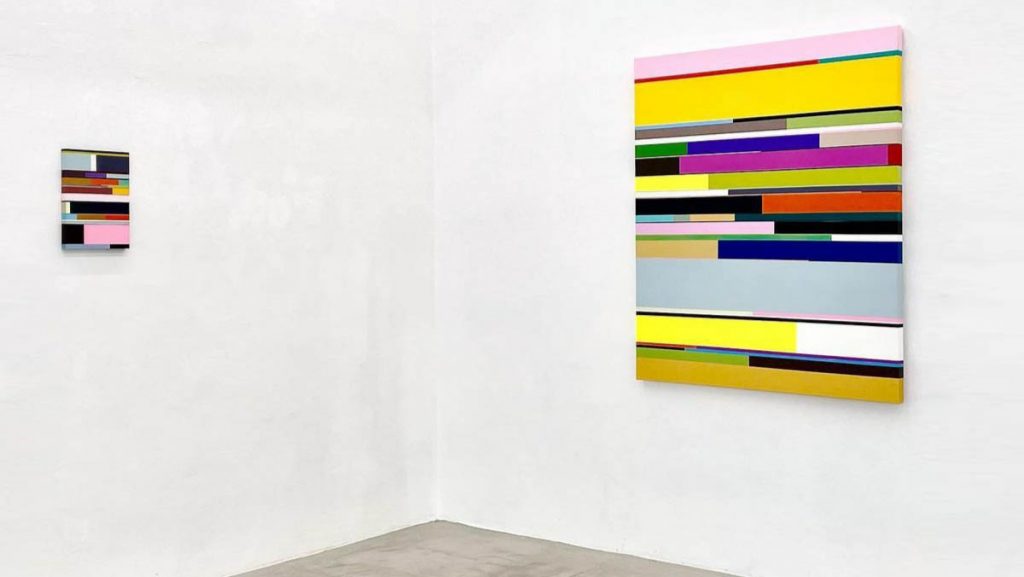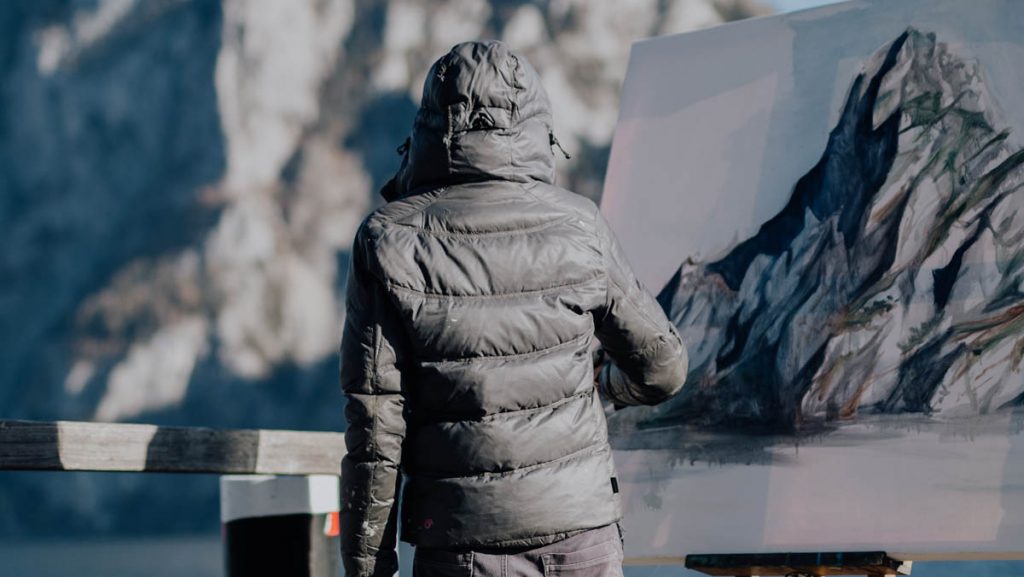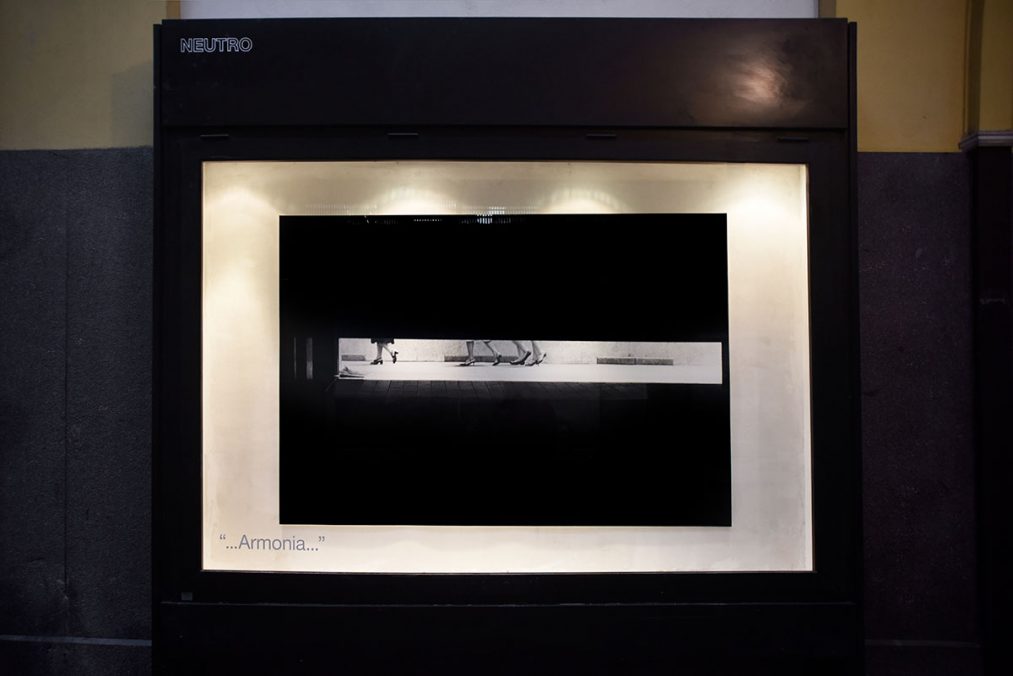
Can you tell us something about the two first exhibitions of NEUTRO?
The first exhibition, Let’s Not Be Honest by The Cool Couple, was a reflection on the relationship between privacy, the construction of the image of ourselves and the outside world in a screen-based society, themes recurring in the artists’ research. The artist duo decided to put up on the notice boards six photographic backdrops that they had bought on Amazon. Victorian libraries, Caribbean beaches, all different subjects that have recently appeared in some of our houses to overcome the lack of fancy rooms during the many video calls that filled our lives in the past months, invading our private space. Then all of the windows showing the backdrops have been vandalized in the most conventional way: writings and slogans have been spray-painted or drawn with markers all over them, creating a short circuit between passers-by and everyday life images, suggesting a discussion on the reliability of one’s digital presence. The artists’ intervention was strong and impudent, but perfectly blended into the space and go unnoticed at a quick look.
The current exhibition is totally different, Metropolis is a journey through the blacks and whites of different cities, a sum of various places that shows Renato D’Agostin personal vision of urban space. Through a mental and visual abstraction process, the subjects in the photos are deployed from their usual reality and drawn inside the public’s imagination, where they reveal the essence of the city. Details and situations that might be similar or different anywhere in the world. The exhibition consists of eleven photographs, a dogged sequence of images portraying either Tokyo or Venice, Washington or Istanbul, showed as a palindrome narration in which each showcase contributes to the creation of an archetypal city in the viewer’s mind, but it also stands alone as an independent chapter of Metropolis, made of harmony and interferences in an eternal balance between light and shadow.
Who is curating the shows?
The space has no curatorship; we simply invite an artist to expose. Then he/she is completely free to experiment and decides everything, from what to expose, the setup/layout up to the title. The only common thing to all exhibitions is the type of poster and the publication’s format and design. We have developed it in such a way that it always fits well with different kinds of artworks. Maybe it will also fit with every type of time. When the artist has already developed the project, a curator or a different figure is invited to write an essay about the project. The text form is completely up to the writer; it could be a critical text, a letter, an interview, a poem, and so on. It aims to start a new level of discussion on the project, giving the public the possibility of deepening or facing a different point of view.
You call the space heterotopic. Has this to do with the philosophy of Mr Michel Foucault?
Which are the features of a heterotopic place for you? When we started to define NEUTRO, also Foucault came to our mind. We were also interested in all kinds of meanings that this word is related to. In medicine, heterotopia is the presence of a particular tissue type at a non-physiological site, but usually co-existing with original tissue in its correct anatomical location. So is NEUTRO, six commercial showcases in a passage, that was not intended to host art, but to us, this looks like a perfect place for an exhibition, and now the different functions of the space coexist.
This simple change of use manages to multiply the occasions to establish a meeting, filling the void between the artwork and the public. As a passage, the space is open to other spaces and works as a connection. At the same time, NEUTRO is a disruption in the urban structure. In there, the usual relationship between the artwork, the site, and the public is missing, and artworks find a place in a new context, a neutral space inside the world of art. I quote a sentence by Foucault that sums up well the ideas of connection but at the same time suspends, neutralizes, and reverses the relationships. I have it in Italian. Hope you can understand it somehow.
quegli spazi che hanno la particolare caratteristica di essere connessi ad altri spazi, ma in modo tale da sospendere, neutralizzare o invertire l’insieme dei rapporti che essi stessi designano, riflettono o rispecchiano
*Artists, galleries, unorthodox or orthodox spaces, are asked about their respective city- sounds or mundane audio from their daily lives, just en passant with their cellphones. NEUTRO Sound „unpacked“ & re-interpreted from artist Cornelius Wildner
I can feel that a strength of NEUTRO are also its publications. Why are they important? Do you collaborate with a publishing house or other colleagues?
Thank you for the note. It means a lot, cos we developed it ourselves, no publishing house. For the prints, we collaborate with a great printing house in Venice, which has experience working on artists‘ books and publications. The idea of accompanying the exhibitions with a publication was born first of all to keep track of the intervention of the artists hosted, given the possible ephemeral nature of the works, but also to allow those who do not have the opportunity to visit the space physically to experience the exhibition in an analogical way. Its format follows the peculiarity of showcases: a transparent envelope represents NEUTRO, in a display inside which the artist’s works are collected and exhibited. The works are reproduced in the form of free cards, without a beginning, an end, or a pre-established order. The publication also stands as a different time of fruition. It is private and serves to deepen the reading of critical texts that accompany it, drawn up from time to time by a third figure. Last but not least is the way to self-finance the space.
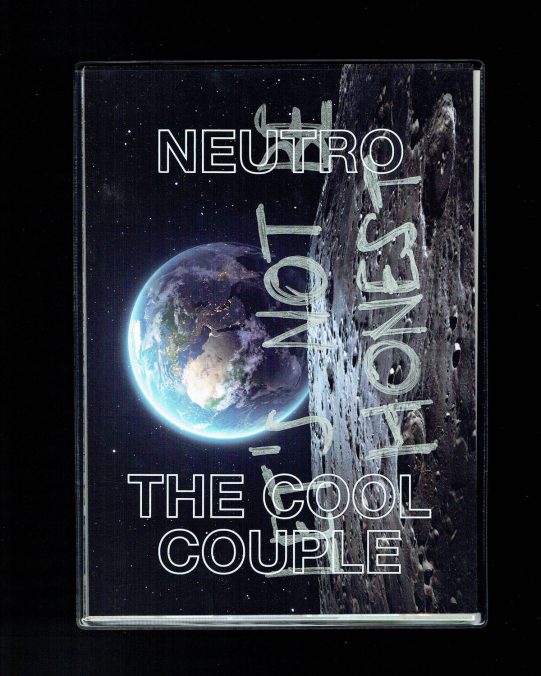
Publication „Let’s not be Honest“, The Cool Couple, 2020. 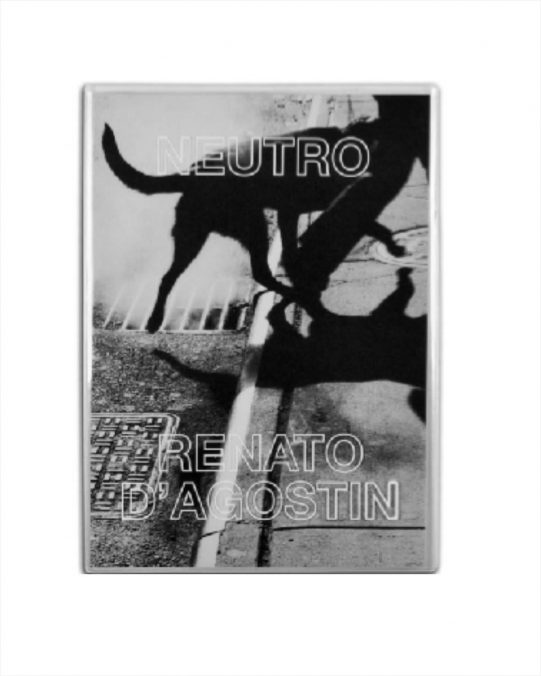
Publication „Metropolis“, Renato D’Agostin, 2021
Publication „Metropolis“, Renato D’Agostin, 2021
What is planned for the year 2021?
We will have some new exhibitions this year. The next one will be of a young artist that works with different media, and then we will have photography again in relation with Fotografia Europea (an important festival of photography in Reggio Emilia). But it’s a surprise.
Contact:
www.neutro.bigcartel.com
www.facebook.com/neutroreggioemilia
www.instagram.com/spazioneutro
Cornelius Wildner (*1970) is a Vienna-based sound artist and music technologist. He deals with ephemeral sounds, field recordings, archiving, live performance, analog and digital synthesis. At the same time, he collaborates with artists from different genres – https://linktr.ee/wildner
About the Interviewer: Erka Shalari (*1988, Tirana) is a Vienna-based art author. She focuses on discovering unique artistic positions, unconventional exhibition spaces, and galleries that have deliberately broken new ground in their working methods. In this regard, she relies on unorthodox publishing practices, coupling these with a nonchalant manner of writing. The work oscillates between articles for magazines, exhibition texts and press releases – https://linktr.ee/erkashalari




